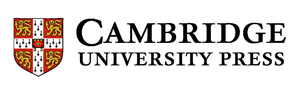
|
Special Session SS15
28 June 2017
Unravelling the first billion years with next-generation observatories and modelling The past few years have seen state-of-the-art observatories, such as the Hubble Space Telescope, Spitzer and Subaru provide tantalising glimpses of the earliest galaxies assembling in the infant Universe. These observations have shed light on a number of key galaxy properties for Lyman Alpha Emitters (LAEs) and Lyman Break galaxies (LBGs) such as their luminosity functions, stellar mass densities, spectral slopes and the relationship between these seemingly diverse populations. Despite this progress, these data sets have given rise to a number of unanswered questions including:
1. What is the key physics governing the formation of early galaxies?
2. What is the escape fraction of ionizing photons from galaxies in the early Universe?
3. What is the relative contribution of galaxies and AGN to reionization?
4. How did reionization proceed through time?
5. How dusty are early galaxies and what are the key sources of dust production?
In this era of new and upcoming cutting-edge facilities such as LoFAR, SKA, JWST, E-ELT, ALMA, EUCLID, MUSE and Subaru/HSC, it is pertinent to discover and exploit the synergies between these different instruments in order to build a coherent picture of the early Universe. Our aim is to bring together observational and theoretical experts in order to build a panchromatic picture of structure formation, galaxy build-up, and reionization in the first billion years, and start a discussion on how to generate and exploit synergies between the next generation of observatories and between theoretical modelling and observations.
Programme 1. The key physics of early galaxy formation
2. Observing the assembly of galaxies in the first billion years
3. Sources of reionization - galaxies, AGN or exotic objects?
4. Escape of ionizing radiation - implications for emission line observations and reionization
5. Dust and metal enrichment in the early Universe in the ALMA-era
6. Looking towards next-generation instruments (JWST/SKA/E-ELT/EUCLID/MOONS)
Invited speakers 1. Andrea Ferrara (Scuola Normale Superiore, Pisa)
2. Roberto Maiolino (Cambridge university)
3. Laura Pentericci (Observatory of Rome)
Scientific organisers Pratika Dayal (co-chair: Kapteyn Institute, The Netherlands)
Pascal Oesch (co-chair: Geneva Observatory, Switzerland)
Benedetta Ciardi (MPA Munich, Germany)
Daniel Schaerer (Geneva Observatory, Switzerland)
Cathryn Trott (Curtin Institute for Radio Astronomy, Australia)
Fabian Walter (MPIA Heidelberg, Germany)
Saleem Zaroubi (Kapteyn Institute, The Netherlands)
Contact Updated on Wed Jan 11 15:02:32 CET 2017
|
||||||||||||||||||||||||||||
|
EWASS 2017 : European Week of Astronomy and Space Science |
|||||||||||||||||||||||||||||
 A power cut will shut down all EAS services on Tuesday, 10 January 2017 starting at 7:30 CET.
A power cut will shut down all EAS services on Tuesday, 10 January 2017 starting at 7:30 CET.




















